[Sale ended 26 Sept 2022]
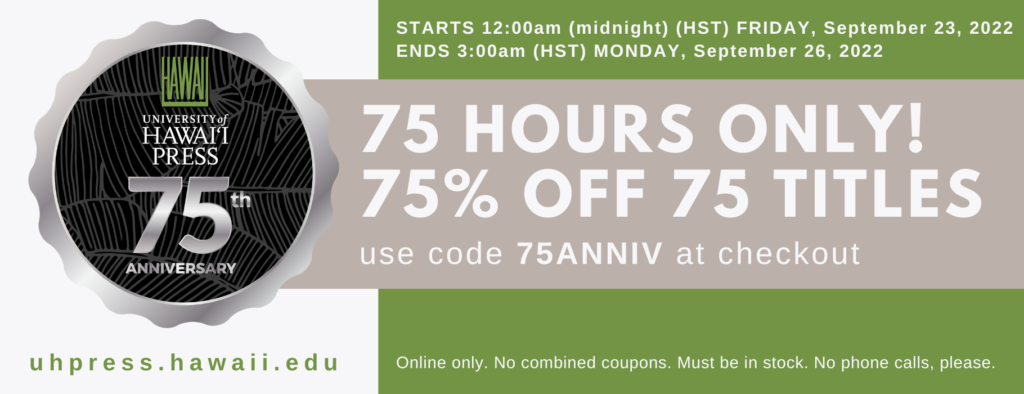
Find our list of sale titles below:
Published twice a year since 1989 by the University of Hawaiʻi Press, Mānoa: A Pacific Journal of International Writing has two issues of special interest to readers this month, which has been designated Kalaupapa Month by the Hawaiʻi state government and celebrates two important figures. Father Damien, the Belgian priest who cared for victims of leprosy at Kalaupapa, Molokaʻi, was born on the 3rd, and civil rights leader Martin Luther King Jr. was born on the 15th.
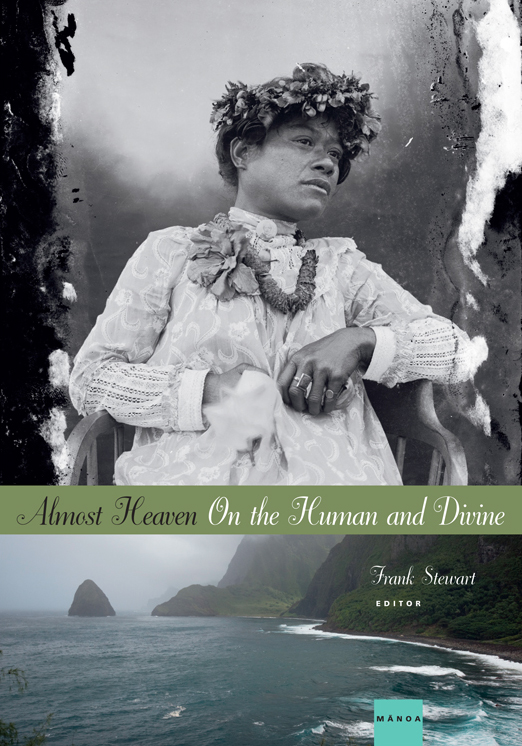
Almost Heaven: On the Human and Divine (winter 2011) presents Aldyth Morris’s play Damien in its entirety, plus a set of images reproduced from glass-plate negatives made at Kalaupapa in the early twentieth century. The images are from the collection of the Congregation of the Sacred Hearts United States Province. Morris was a Hawaiʻi playwright who received the Hawaiʻi Award for Literature in 1978 and worked for many years at UH Press.
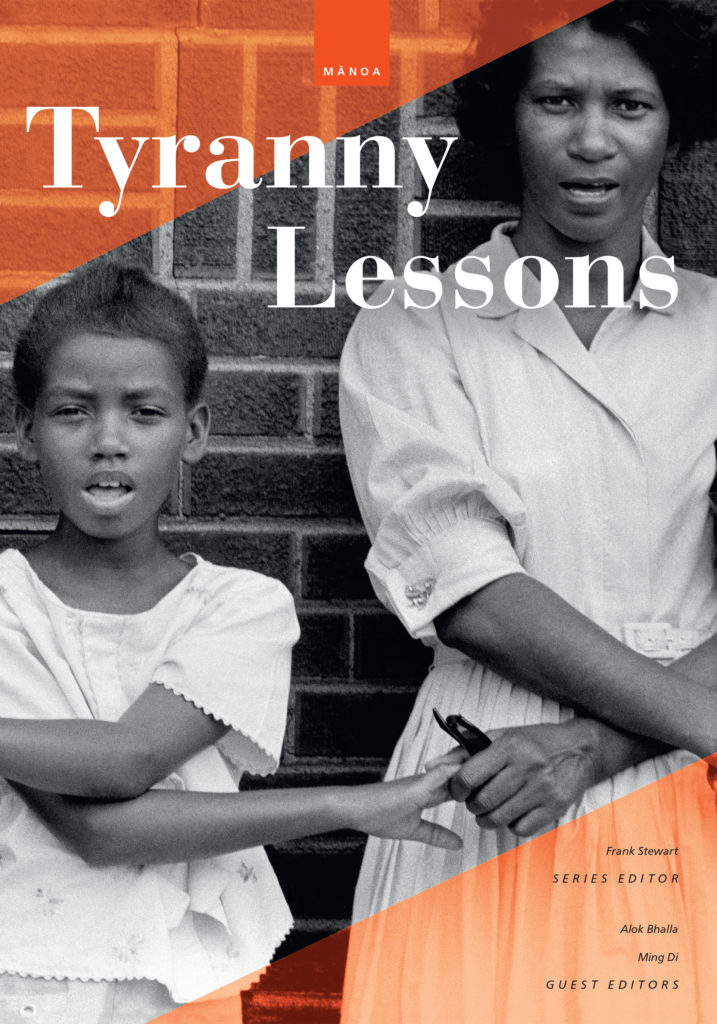
Tyranny Lessons: International Prose, Poetry, and Performance (summer 2020) features photographs from the 1960s by Danny Lyon from his book Memories of the Southern Civil Rights Movement. Lyon was the first photographer of the Student Non-violent Coordinating Committee and was jailed alongside Martin Luther King Jr. Working next to activists such as Julian Bond and Howard Zinn, he captured sit-ins, church bombings, speeches by John Lewis and other leaders, and the arrest and jailing of protestors.
Members of the UH community can view these works for free at Project Muse.
Links:
• Star-Advertiser article on Kalaupapa Month https://www.staradvertiser.com/2022/01/07/hawaii-news/
in-january-kalaupapa-month-hawaiians-reclaim-loved-ones/
• Mānoa website https://manoa.hawaii.edu/manoajournal/
• Almost Heaven https://muse.jhu.edu/issue/25083
• Tyranny Lessons https://muse.jhu.edu/issue/42693
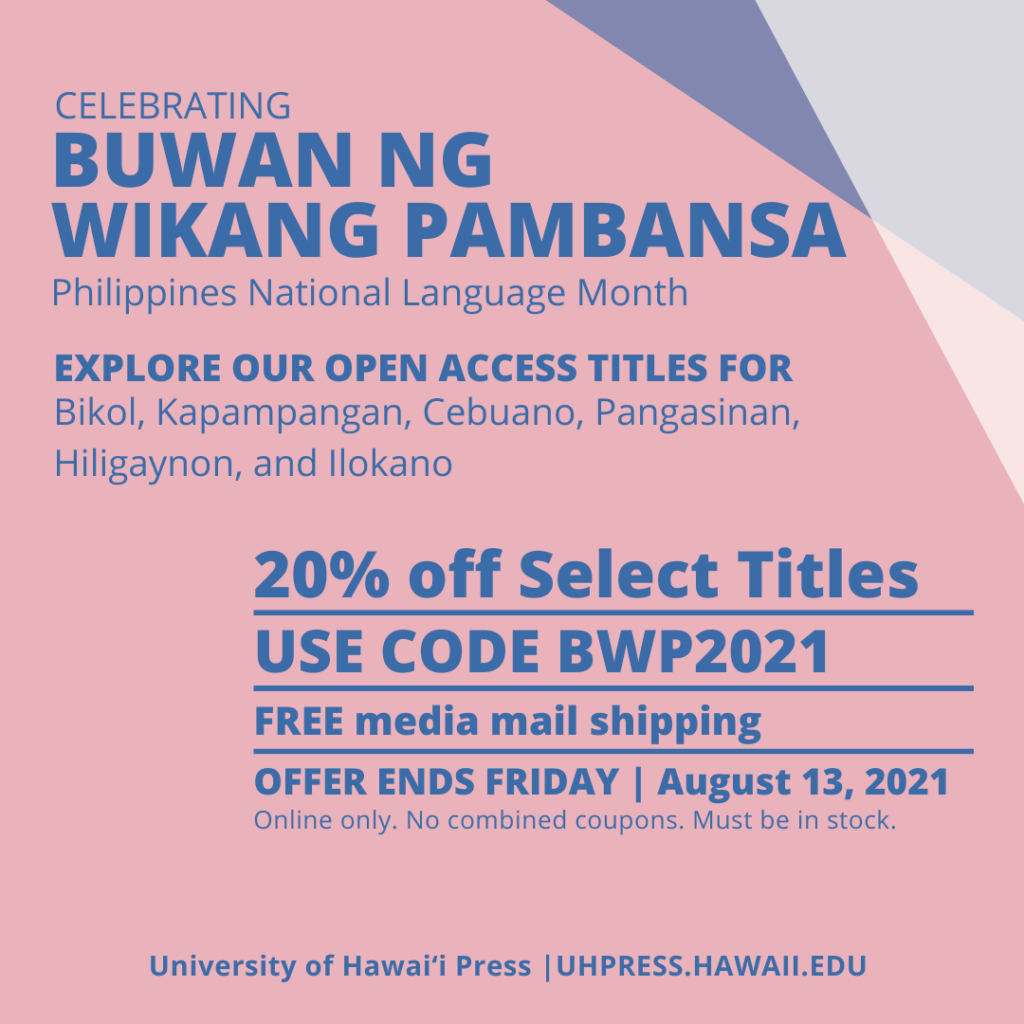
Edited by Dr. Mara A. Mulrooney, Director of Cultural Resources, Bishop Museum
The Rapa Nui Journal (RNJ) is the official, peer-reviewed journal, of the Easter Island Foundation (EIF). The journal serves as a forum for interdisciplinary scholarship in the humanities and social sciences on Easter Island and the Eastern Polynesian region. Each issue may include Research Articles, Research Reports, Commentaries or Dialogues, Book or Media Reviews and EIF News.
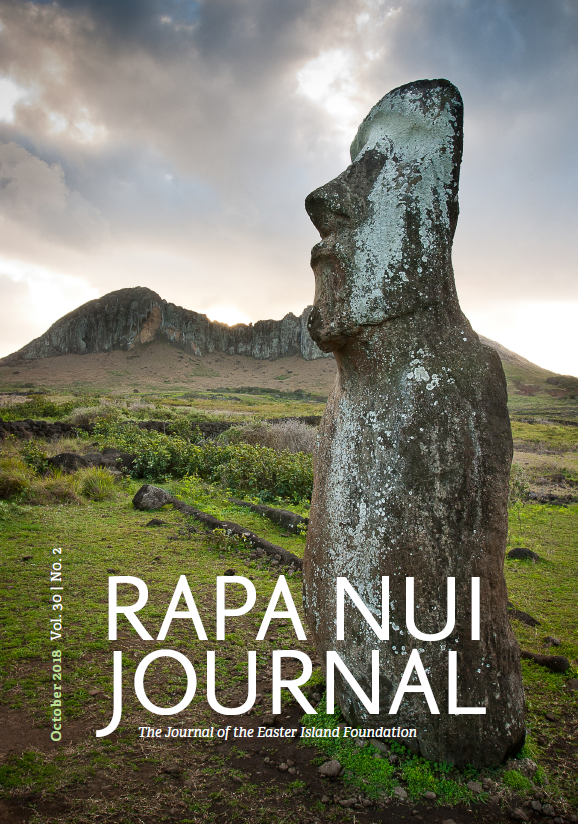
© Stephen, Jesse W. (2005, July 28). The Traveling Moai [At Tongariki near Rano Raraku, Rapa Nui].
File Format and Manuscript structure
Article manuscripts are peer-reviewed, and should be 3000 to 9000 words in length. Reports, Reviews and commentaries are not peer-reviewed, and should be 1000 to 6000 words in length.
Manuscripts should be double-spaced with margins of at least 1 inch (2.5 cm) on each side, and submitted as a single Microsoft Word (or similar) file with the following structure:
Manuscripts should be submitted online. You may review journal policies and author guidelines on the journal submission site.
Please send inquiries to the Rapa Nui Journal editor at ([email protected]).
Subscribe to Rapa Nui Journal through UH Press or browse full-text issues online .
The editors of Biography: An Interdisciplinary Quarterly at the University of Hawai‘i at Mānoa have announced their call for nominations for the 2018 Biography Prize, which is awarded to an UH Mānoa graduate student who demonstrates excellency in life writing.
The Biography Prize winner receives a monetary award and is invited to give a presentation in the Brown Bag Biography lecture series.
Nominations–which should include the student’s name, contact information, and project title–are due to [email protected] by Monday, April 16.
Once nominations are received, the Center for Biographical Research will notify the student to arrange for submission of the project. Candidates may also nominate their own work for the award.
Some candidates will be working on their manuscripts well into April, and this will not be a problem so long as they are able to submit their work by the April 16 deadline.
The candidate should be a PhD or MA student in any graduate department of the University of Hawai‘i at Mānoa (or have graduated with an MA or PhD in December 2017).
The submission can be work that is written for a class, that is a section of a thesis or dissertation, or that is the completed thesis or dissertation. If written for a class, it should be work completed between May 2017 and May 2018 (and not previously submitted for a Biography Prize).
The project should focus on or intersect with any aspect of life writing theory, history, or practice in any medium and discipline
The project should be at least 3,000 to 10,000 words in length: longer projects can be submitted in their entirety, with a particular chapter or section highlighted for consideration. The work should demonstrate knowledge or awareness of central debates and theorizing in the field and study of life writing.
See flyer below or visit CBR’s Facebook page for more details.
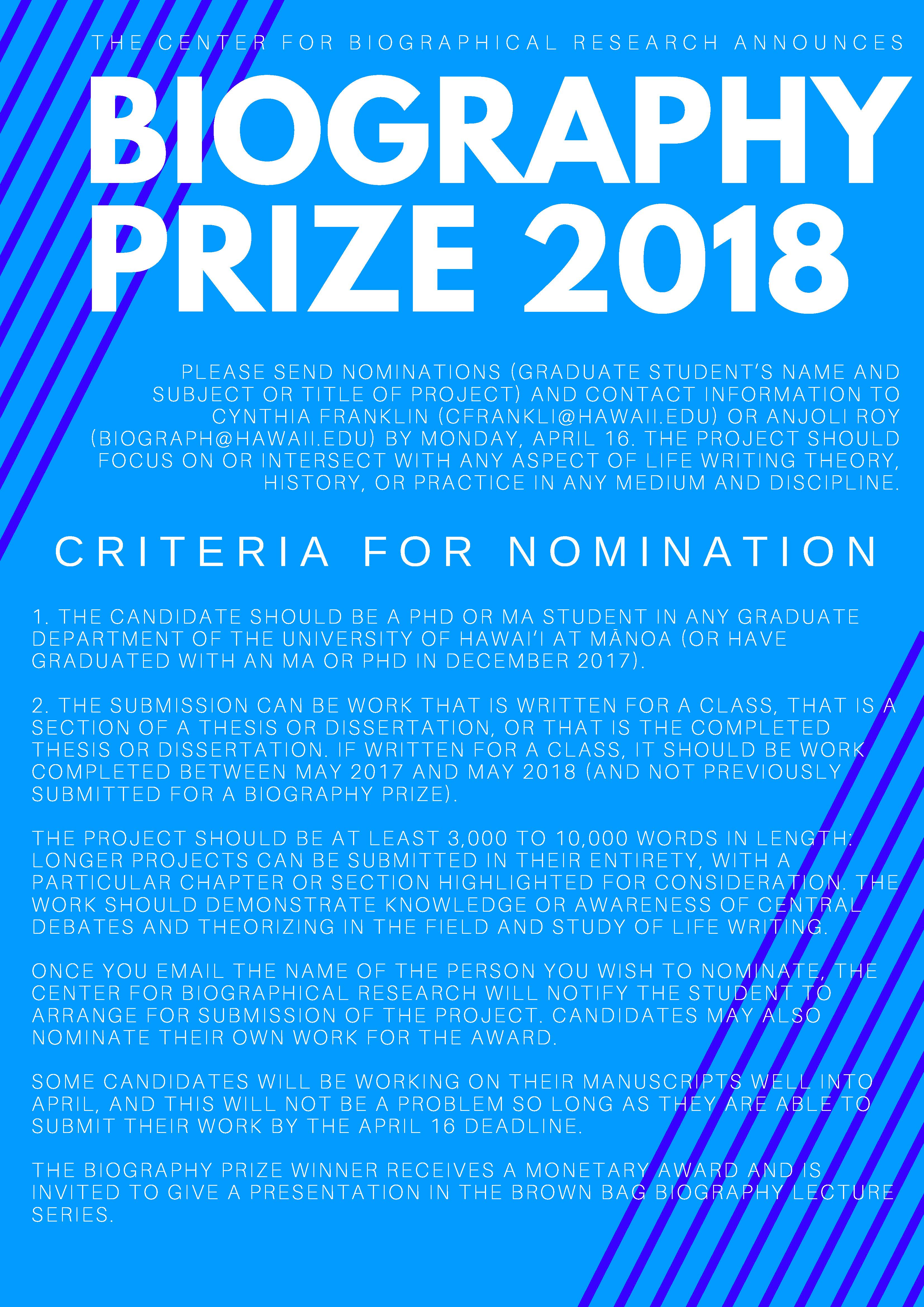
Read Biography archives at Project MUSE
Sign up to receive e-mail alerts about Biography new issues from Project MUSE
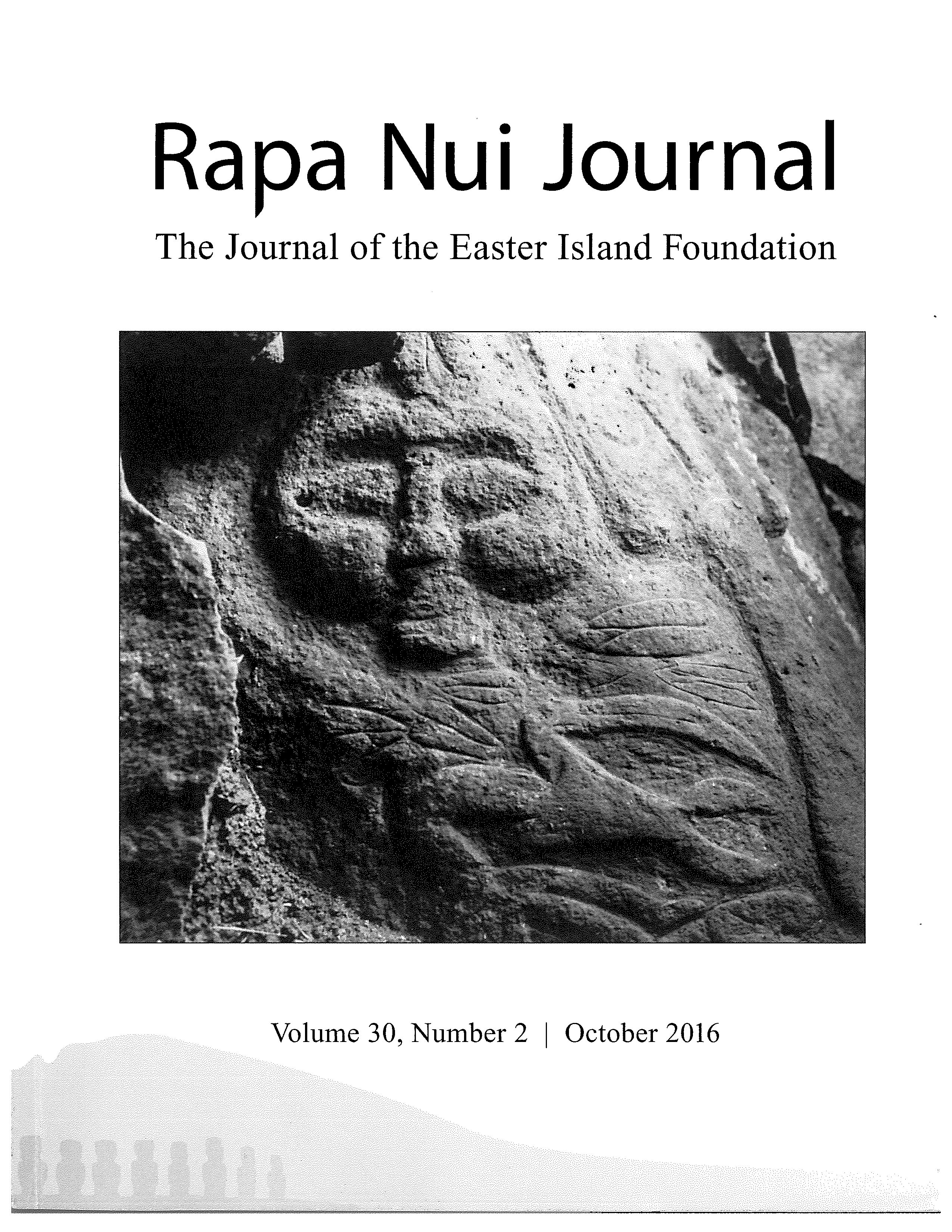
UH Press will renew publication of the Rapa Nui Journal in a new partnership with the Easter Island Foundation.
University of Hawai`i Press is pleased to announce a new partnership with the Easter Island Foundation for the continued publication of the Rapa Nui Journal.
Founded in 1989, the Easter Island Foundation (EIF) provides a forum for a variety of programs and activities designed to promote awareness of Easter Island’s unique heritage and to further knowledge of the vast region of Oceania. Members receive a print and electronic subscription to the Rapa Nui Journal.
“We are very excited to work with the Easter Island Foundation to publish Rapa Nui Journal and to assist in managing their membership process,” said Pamela Wilson, Journals Manager at UH Press. “We look forward to connecting with Foundation members and bringing their journal to a larger audience.”
Rapa Nui Journal (RNJ) serves as a forum for interdisciplinary scholarship in the humanities and social sciences on Easter Island and the Eastern Polynesian region. Abstracts for RNJ articles are published in English, Spanish or Rapanui.
Through UH Press, content from the journal may now be read online at Project MUSE. Readers may also receive free e-mail alerts of new RNJ content posted online: sign up here.
“As a nonprofit publisher known for our publications in Pacific Island studies, we feel particularly compatible with the mission of the Easter Island Foundation,” said Joel Cosseboom, UH Press Interim Director and Publisher.
As part of the agreement, UH Press will offer the Foundation assistance with managing its member database, journal archives, marketing, subscriptions, warehousing and shipping. EIF memberships, RNJ subscriptions, and RNJ contributor guidelines may be found on the UH Press website.
“The Easter Island Foundation is pleased to be welcomed into the family of publications of the University of Hawai’i Press as they assume the publication of the Rapa Nui Journal,” said David L. Rose, President of the Easter Island Foundation. “Rapa Nui Journal has a long history of supporting the publication and dissemination of Polynesian research starting with the hand-typed Rapa Nui Notes over 30 years ago. From that humble beginning, the Rapa Nui Journal became a strong, peer-reviewed voice of research about Rapa Nui and Polynesia. We look forward to a long and successful partnership with UH Press as we begin this next phase of the Rapa Nui Journal.”
RNJ joins other established Pacific Island studies journals published by UH Press, including The Contemporary Pacific: A Journal of Island Affairs, Asian Perspectives: The Journal of Archaeology for Asia and the Pacific and Oceanic Linguistics.
For more details, please contact Journals Manager Pamela Wilson at (808) 956-6790 or [email protected].
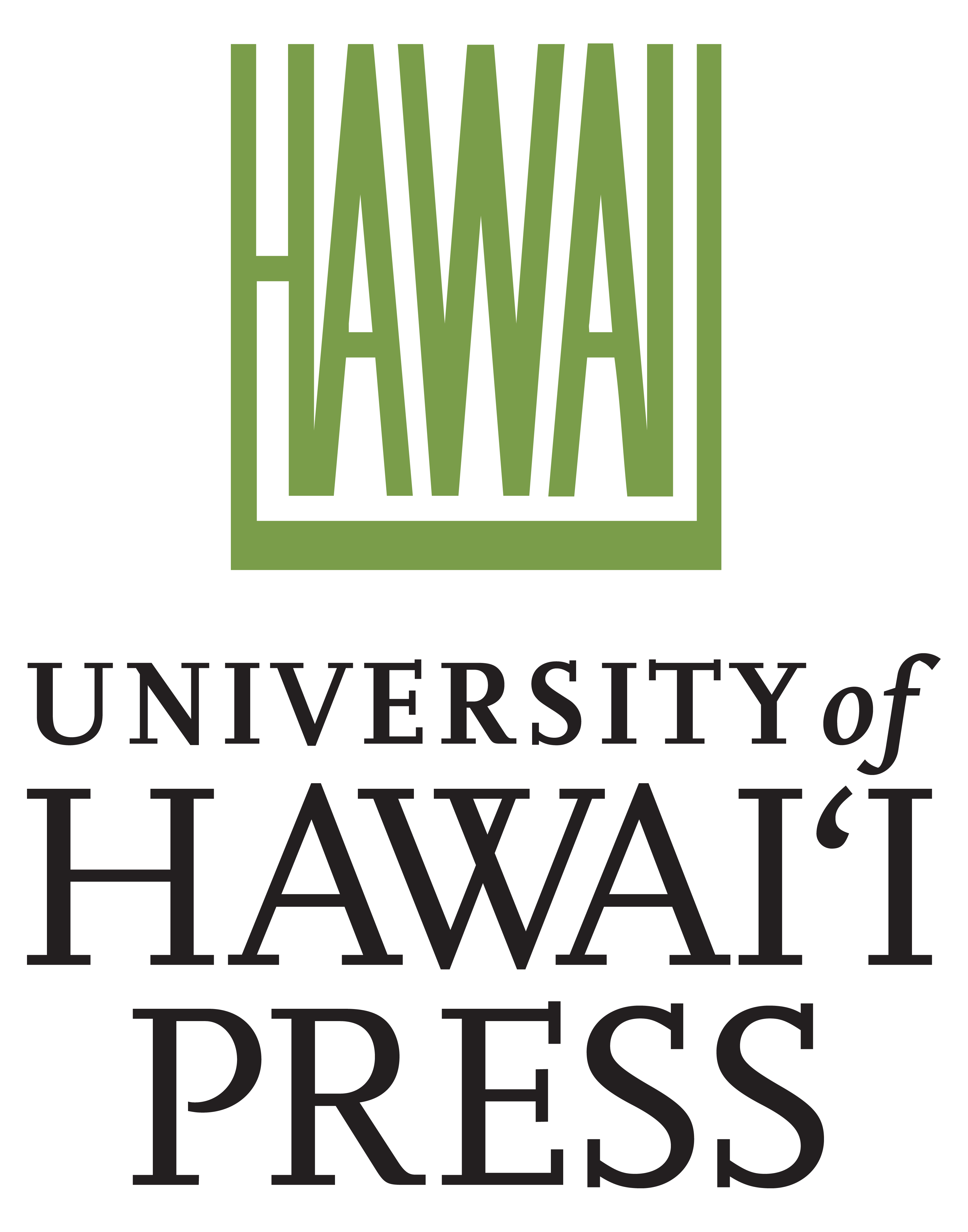 Established in 1947, the University of Hawai`i Press supports the mission of the university through the publication of books and journals of exceptional merit. The Press strives to advance knowledge through the dissemination of scholarship—new information, interpretations, methods of analysis—with a primary focus on Asian, Pacific, Hawaiian, Asian American, and global studies. It also serves the public interest by providing high-quality books, journals and resource materials of educational value on topics related to Hawai`i’s people, culture, and natural environment. Through its publications the Press seeks to stimulate public debate and educate both within and outside the classroom.
Established in 1947, the University of Hawai`i Press supports the mission of the university through the publication of books and journals of exceptional merit. The Press strives to advance knowledge through the dissemination of scholarship—new information, interpretations, methods of analysis—with a primary focus on Asian, Pacific, Hawaiian, Asian American, and global studies. It also serves the public interest by providing high-quality books, journals and resource materials of educational value on topics related to Hawai`i’s people, culture, and natural environment. Through its publications the Press seeks to stimulate public debate and educate both within and outside the classroom.
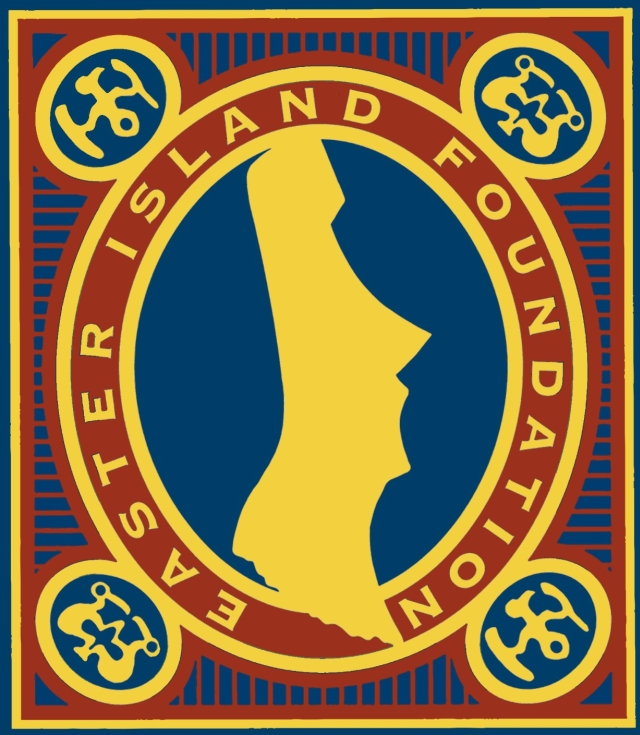 The Easter Island Foundation was originally founded to create a research library on Rapa Nui to house the collections of anthropologist William Mulloy and to encourage study and research about the island. The Foundation provides a forum for a variety of programs and activities designed to further knowledge about Easter Island and Oceania. Programs include a scholarship program that provides financial aid to assist students of Rapanui ancestry with their college education, as well as the publication of the Rapa Nui Journal, which fulfills the foundation’s mission to promote, stimulate, and disseminate research on Easter Island and other Polynesian islands by members of scientific, historical, and cultural disciplines. The Easter Island Foundation is a non-profit 501(3)(c) organization. Donations may be made directly to the Easter Island Foundation, P.O. Box 6774, Los Osos, CA 93412-6774 . Phone: (805)-528-8558.
The Easter Island Foundation was originally founded to create a research library on Rapa Nui to house the collections of anthropologist William Mulloy and to encourage study and research about the island. The Foundation provides a forum for a variety of programs and activities designed to further knowledge about Easter Island and Oceania. Programs include a scholarship program that provides financial aid to assist students of Rapanui ancestry with their college education, as well as the publication of the Rapa Nui Journal, which fulfills the foundation’s mission to promote, stimulate, and disseminate research on Easter Island and other Polynesian islands by members of scientific, historical, and cultural disciplines. The Easter Island Foundation is a non-profit 501(3)(c) organization. Donations may be made directly to the Easter Island Foundation, P.O. Box 6774, Los Osos, CA 93412-6774 . Phone: (805)-528-8558.
The editors of Biography: An Interdisciplinary Quarterly and directors of the Center for Biographical Research at the University of Hawai‘i at Mānoa have released their Spring 2018 schedule of Biography Brown Bags.
If you’re in Hawai’i, mark your calendars and BYOL (bring your own lunch) to these exciting discussions about life writing. Unless otherwise noted, the following brown bags are held from noon to 1:15 p.m. Thursdays in Kuykendall Room 409-A at UH Mānoa. Click here for visitor parking information.
February 1: “Themes in the Narratives by Escapees from the Holocaust in WWII Italy.”
Luciano Minerbi, Dept. of Urban and Regional Planning, UH-Mānoa
February 8: “Constructing Post-Soviet Stardom: Auteur and the state in the case of Renata Litvinova.” Olga Mukhortova, Languages and Literatures of Europe and the Americas, UH Mānoa
February 15: “Writing With Not About: Constellating Stories in Auto-ethnography.”
John Gagnon, Dept. of English, UH-Mānoa
February 22: “Masters of the Currents: Theater, Community, and Social Change.”
Leilani Chan and Ova Saopeng, TeAda Productions
March 1*: “Island Soldiers: Living with Militarization in Micronesia.” Pacific Island Student Panel co-organized by the Marianas Club, for Mes Chamoru and Nuclear Remembrance Day. Moderated by Craig Santos Perez.
*This session will be held in Kuykendall Room 410
March 8: “Hulahula and Learn Something: Expressing Culture and Science.” Kiana Frank, Pacific Biosciences Research Center, UH-Mānoa
March 15: “Selling It Like It Is: The Value of Narrative in Business and Policy.” Amanda Rothschild, Dept. of Urban and Regional Planning, UH-Mānoa
March 22: “An Introduction to the Jon Van Dyke Archive at the UHM Law Library.” Ellen-Rae Cachola, William S. Richardson School of Law, UH-Mānoa
April 5: “Losing Don Belton: Meditations on Friendship, Murder, and Race, and the Ethics of Life Writing.” Mara Miller, Visiting Scholar with the Center for Biographical Research and Dept. of English, UH-Mānoa
April 12: “Al Harrington: Reflections on Genealogy, Acting, and a Polynesian Revue.” Al Harrington, Educator, Actor, and Entertainer
April 19: “Filling the Void: Creating Playing Space for Today’s Pacific Islander.”
Kiki Rivera, Dept. of Theatre and Dance, UH-Mānoa
Apr 26*: “Exploring the Vā in the Oral Sharing of Poetry.” Grace Teuila Taylor, Visiting Writer in Residence, Dept. of English, UH-Mānoa
*This session will be held in Kuykendall Room 410
See flyer below or visit CBR’s Facebook page for more details.
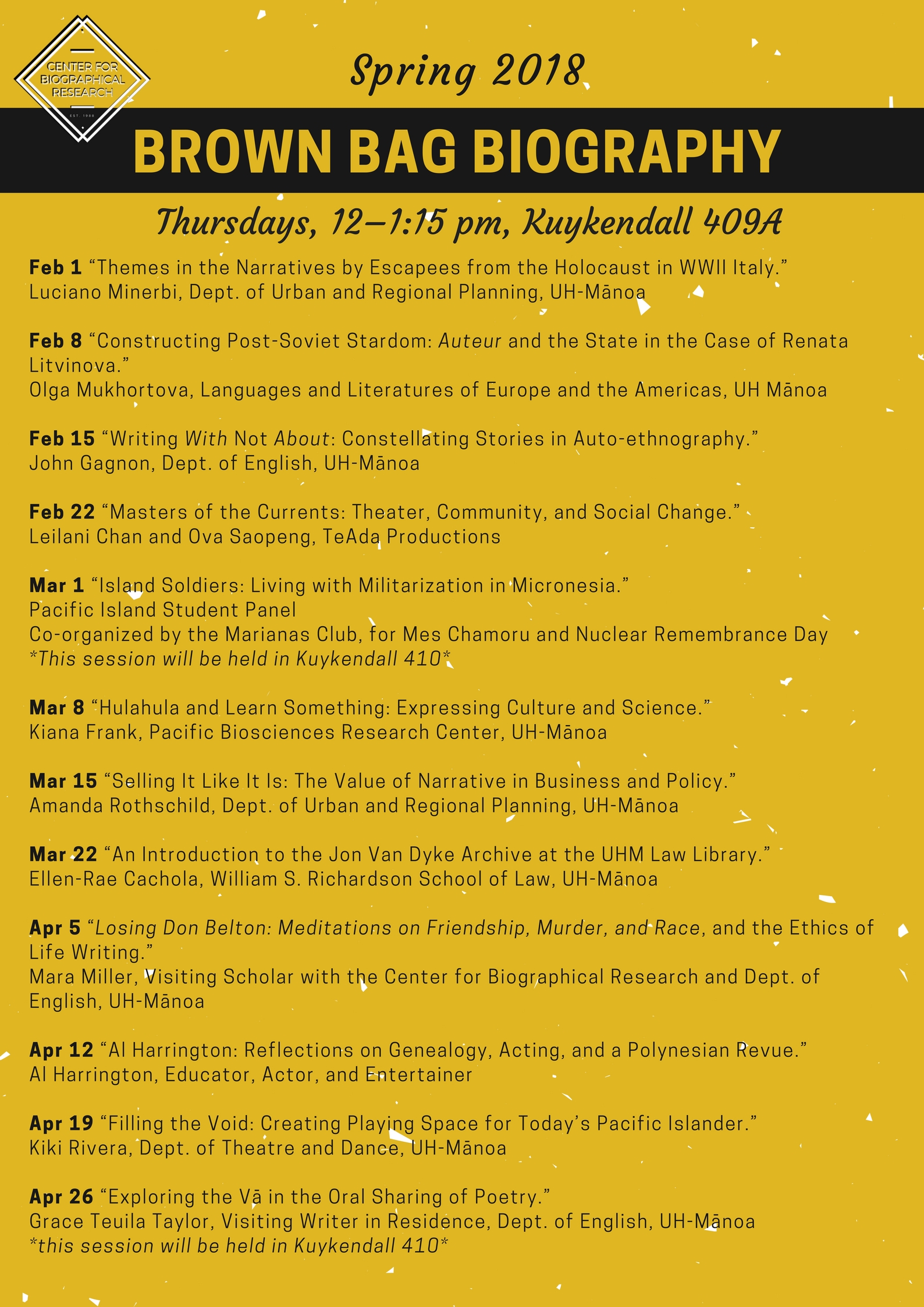
Read Biography archives at Project MUSE
Sign up to receive e-mail alerts about Biography new issues from Project MUSE
![]() This is Part 6 in a series of University of Hawai`i Press blog posts celebrating University Press Week and highlighting scholarship published by UH Press journals in the past year. Read our introductory blog post here. Our hope is that this series will shed new light on how UH Press “sells the facts,” so to speak, and the value our 24 journals bring to our very existence. Links to each journal and article are provided below.*
This is Part 6 in a series of University of Hawai`i Press blog posts celebrating University Press Week and highlighting scholarship published by UH Press journals in the past year. Read our introductory blog post here. Our hope is that this series will shed new light on how UH Press “sells the facts,” so to speak, and the value our 24 journals bring to our very existence. Links to each journal and article are provided below.*
Asian Perspectives: The Journal of Archaeology for Asia and the Pacific, Volume 56, Number 2, 2017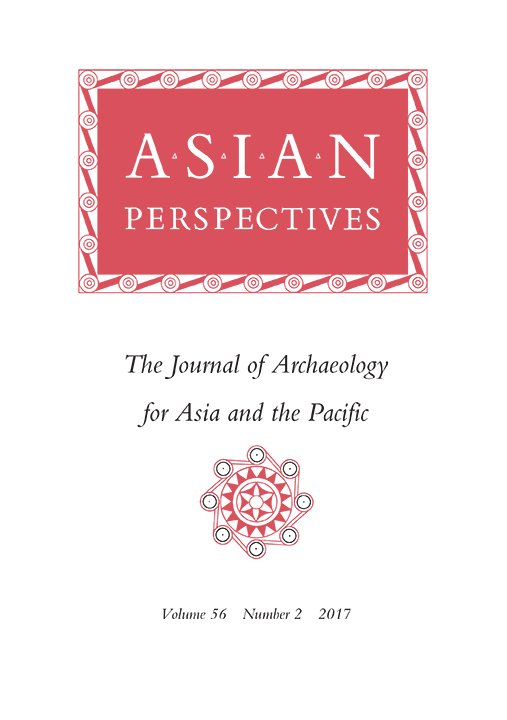
Article: “The Search for Tsunami Evidence in the Geological and Archaeological Records, With a Focus on Japan” by Gina L. Barnes
Context: Archeologist Gina L. Barnes takes a look at tsunami sites through the lens of disaster preparedness: “tsunami damage seldom leads to collapse of a society or civilization, though the socio-economic status of the affected society is crucial to the nature of human response […] Disaster archaeology, including tsunami archaeology, is thus a timely and welcome approach to understanding the situation of the world today.”
Pacific Science: A Quarterly Devoted to the Biological and Physical Sciences of the Pacific Region, Volume 71, Number 4, October 2017
Article: “Estimating Cost-Effectiveness of Hawaiian Dry Forest Restoration Using Spatial Changes in Water Yield and Landscape Flammability under Climate Change” by Christopher A. Wada, Leah L. Bremer, Kimberly Burnett, Clay Trauernicht, Thomas Giambelluca, Lisa Mandle, Elliott Parsons, Charlotte Weil, Natalie Kurashima, and Tamara Ticktin
Context: This study joins dozens of Pacific Science research articles that show the effects of climate change, and it appears with seven open-access articles that focus on the challenges facing native forest restoration in Hawai’i and the Pacific region. (And while we’re “selling the facts,” we should mention Pacific Science also published a peer-reviewed biological fact in the past year: the discovery of a new species of Stylasterid in the Northwest Hawaiian Islands.)
Yearbook of the Association of Pacific Coast Geographers, Volume 79, 2017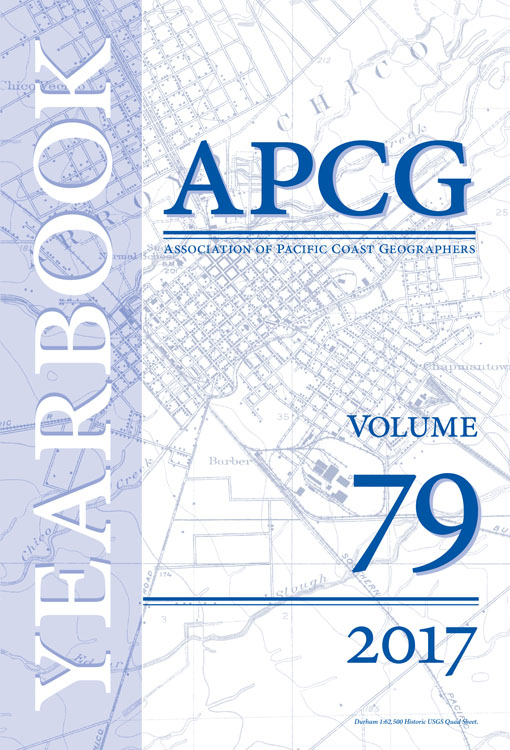
Article: “Institutional Obstacles to Beaver Recolonization and Potential Climate Change Adaptation in Oregon, USA” by Jeff Baldwin
Context: As streams dry up due to climate change, beaver are being displaced from their natural habitats. This study critically examines five institutional blockages to beaver recolonization in Oregon through multiple interviews, policies, and publications.
The Contemporary Pacific: A Journal of Island Affairs, Volume 29, Number 2, 2017
Section: “Year in Review: International Issues and Events” by Nic Maclellan
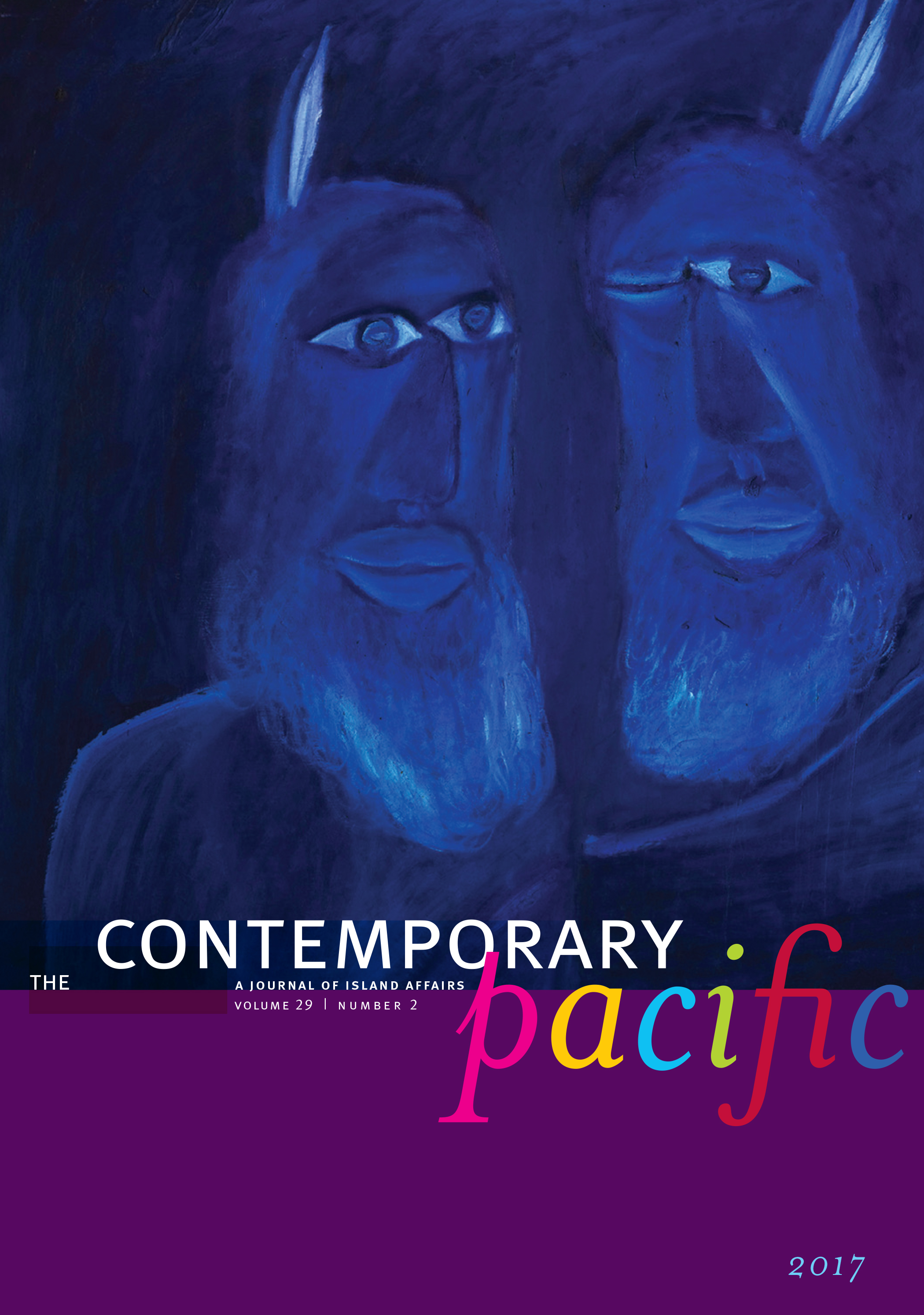 Context: Nic Maclellan reflects on the U.S.’s political influence on the Pacific region, especially as it relates to environmental regulation: “Debates over climate action, West Papua, fisheries, and trade continued as a feature of regional affairs in 2016, often dividing Pacific governments and their international partners. The election of Donald Trump as U.S. president in November set the stage for these divisions to continue, given Trump’s statements during the election campaign on climate change and America’s new directions in foreign policy.” This introduction is followed by more reports from the field, including Fiji, Papua, Solomon Islands, and Vanuatu. Also appearing in this issue: “Climate Change and the Imagining of Migration: Emerging Discourses on Kiribati’s Land Purchase in Fiji” by Elfriede Hermann and Wolfgang Kempf.
Context: Nic Maclellan reflects on the U.S.’s political influence on the Pacific region, especially as it relates to environmental regulation: “Debates over climate action, West Papua, fisheries, and trade continued as a feature of regional affairs in 2016, often dividing Pacific governments and their international partners. The election of Donald Trump as U.S. president in November set the stage for these divisions to continue, given Trump’s statements during the election campaign on climate change and America’s new directions in foreign policy.” This introduction is followed by more reports from the field, including Fiji, Papua, Solomon Islands, and Vanuatu. Also appearing in this issue: “Climate Change and the Imagining of Migration: Emerging Discourses on Kiribati’s Land Purchase in Fiji” by Elfriede Hermann and Wolfgang Kempf.
*Institutional access to online aggregators such as Project MUSE may be required for full-text reading. For access questions, please see the Project MUSE FAQ available here or contact your local library.
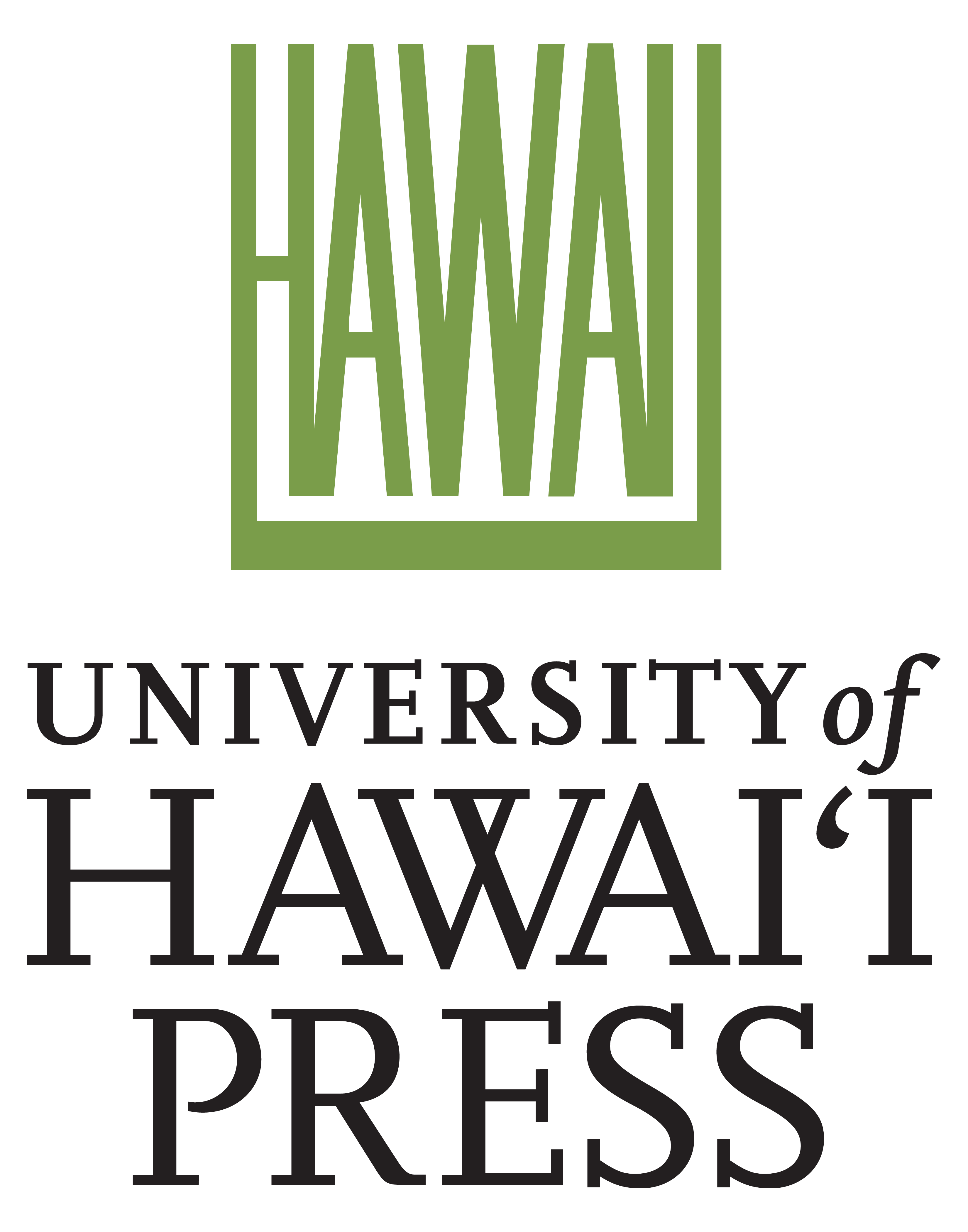 Established in 1947, the University of Hawai`i Press supports the mission of the university through the publication of books and journals of exceptional merit. The Press strives to advance knowledge through the dissemination of scholarship—new information, interpretations, methods of analysis—with a primary focus on Asian, Pacific, Hawaiian, Asian American, and global studies. It also serves the public interest by providing high-quality books, journals and resource materials of educational value on topics related to Hawai`i’s people, culture, and natural environment. Through its publications the Press seeks to stimulate public debate and educate both within and outside the classroom.
Established in 1947, the University of Hawai`i Press supports the mission of the university through the publication of books and journals of exceptional merit. The Press strives to advance knowledge through the dissemination of scholarship—new information, interpretations, methods of analysis—with a primary focus on Asian, Pacific, Hawaiian, Asian American, and global studies. It also serves the public interest by providing high-quality books, journals and resource materials of educational value on topics related to Hawai`i’s people, culture, and natural environment. Through its publications the Press seeks to stimulate public debate and educate both within and outside the classroom.
For more information on the University of Hawai`i Press and our publications, visit www.uhpress.hawaii.edu. To receive table-of-contents email alerts for these publications, please click here to sign up at Project MUSE.
![]() This is Part 5 in a series of University of Hawai`i Press blog posts celebrating University Press Week and highlighting scholarship published by UH Press journals in the past year. Read our introductory blog post here. Our hope is that this series will shed new light on how UH Press “sells the facts,” so to speak, and the value our 24 journals bring to our very existence. Links to each journal and article are provided below.*
This is Part 5 in a series of University of Hawai`i Press blog posts celebrating University Press Week and highlighting scholarship published by UH Press journals in the past year. Read our introductory blog post here. Our hope is that this series will shed new light on how UH Press “sells the facts,” so to speak, and the value our 24 journals bring to our very existence. Links to each journal and article are provided below.*
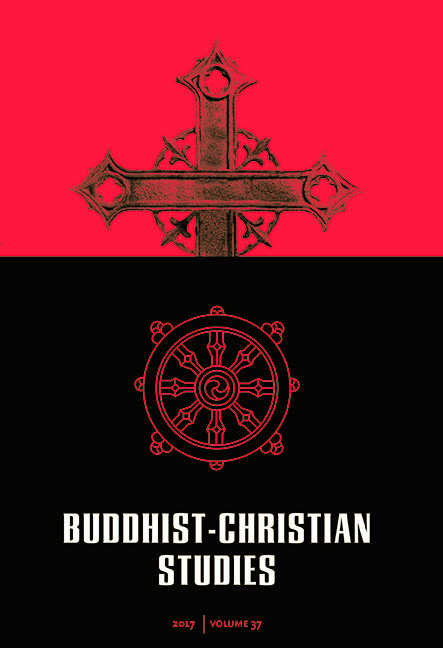 Buddhist-Christian Studies, Volume 37, 2017
Buddhist-Christian Studies, Volume 37, 2017
Special Section: What Is Wrong With Us? What Is Wrong with the World?
Context: A sign of the times: Volume 37 of Buddhist-Christian Studies includes a special section of four articles where theologians attempt to answer these questions: What is Wrong With Us? What is Wrong With the World?
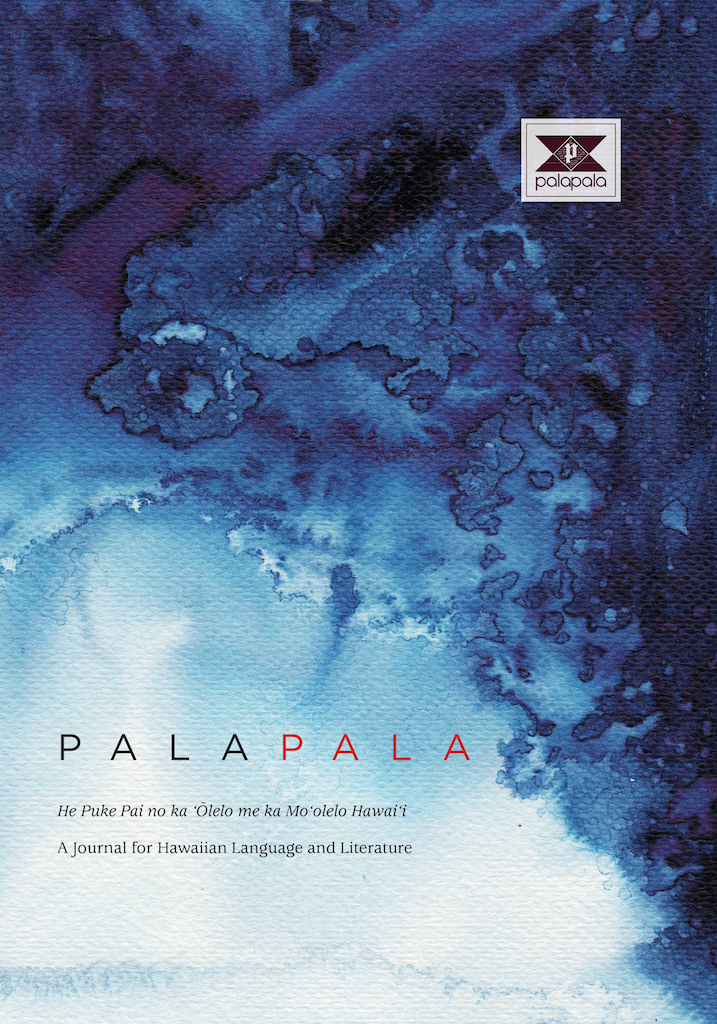
Palapala: A Journal for Hawaiian Language and Literature, Volume 1, 2017
Article: “No ka Baibala Hemolele: The Making of the Hawaiian Bible” by Jeffrey Lyon
Context: In the first peer-reviewed Hawaiian language journal to be published exclusively online, Palapala editor and author Jeffrey “Kapali” Lyon shares the history behind the making of the Hawaiian Bible, the largest single volume ever printed in the Hawaiian language.
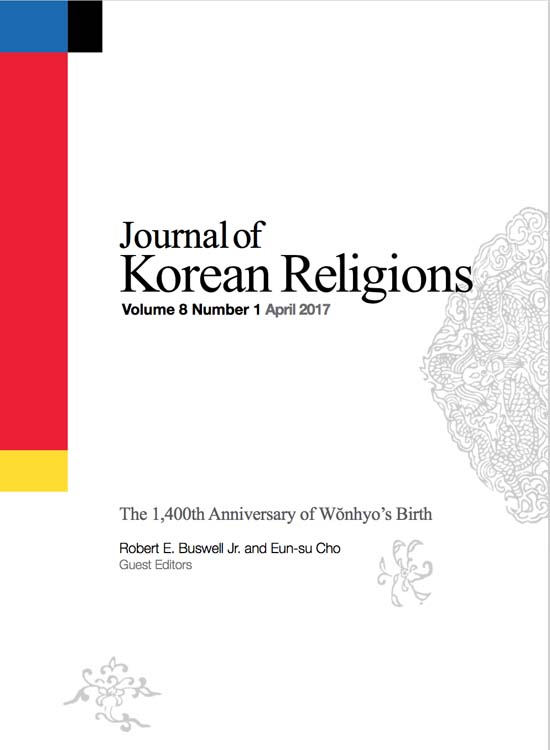
Journal of Korean Religions, Volume 8, Number 1, April 2017
Special Issue: The 1,400th Anniversary of Wŏnhyo’s Birth
Context: How long can a religious figure shape the cultural landscape of a nation? In the case of Wŏnhyo 元曉, we can confidently say 1,400 years. The editors of the Journal of Korean Religions curated a special issue showing how the Korean Buddhist scholar’s writings “continue to inspire the current generation of intellectuals in Korea, Asia, and the West.”
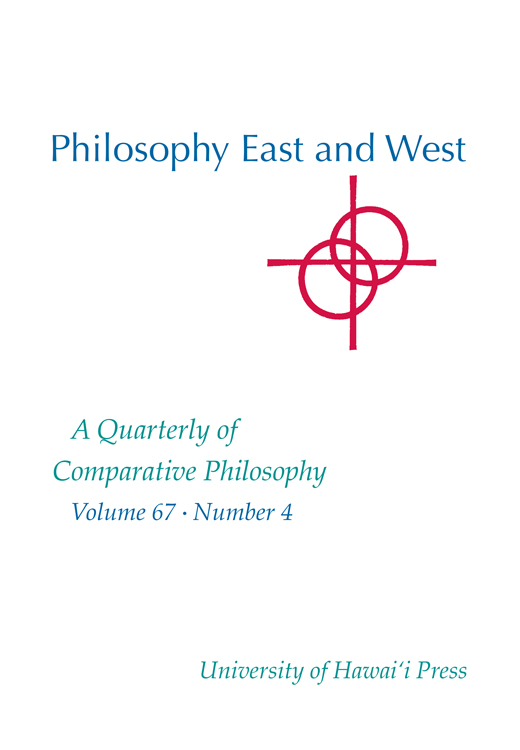
Philosophy East and West, Volume 67, Number 4, October 2017
Special Issue: Eleventh East-West Philosophers’ Conference, “State-of-the-Art on Comparative Philosophy”
Context: Philosophy East and West Volume 67 tackles issues around the long-standing tendency of Western philosophers to reject the legitimacy of Chinese, Indian and Japanese philosophy.
*Institutional access to online aggregators such as Project MUSE may be required for full-text reading. For access questions, please see the Project MUSE FAQ available here or contact your local library.
 Established in 1947, the University of Hawai`i Press supports the mission of the university through the publication of books and journals of exceptional merit. The Press strives to advance knowledge through the dissemination of scholarship—new information, interpretations, methods of analysis—with a primary focus on Asian, Pacific, Hawaiian, Asian American, and global studies. It also serves the public interest by providing high-quality books, journals and resource materials of educational value on topics related to Hawai`i’s people, culture, and natural environment. Through its publications the Press seeks to stimulate public debate and educate both within and outside the classroom.
Established in 1947, the University of Hawai`i Press supports the mission of the university through the publication of books and journals of exceptional merit. The Press strives to advance knowledge through the dissemination of scholarship—new information, interpretations, methods of analysis—with a primary focus on Asian, Pacific, Hawaiian, Asian American, and global studies. It also serves the public interest by providing high-quality books, journals and resource materials of educational value on topics related to Hawai`i’s people, culture, and natural environment. Through its publications the Press seeks to stimulate public debate and educate both within and outside the classroom.
For more information on the University of Hawai`i Press and our publications, visit www.uhpress.hawaii.edu. To receive table-of-contents email alerts for these publications, please click here to sign up at Project MUSE.
![]() This is Part 4 in a series of University of Hawai`i Press blog posts celebrating University Press Week and highlighting scholarship published by UH Press journals in the past year. Read our introductory blog post here. Our hope is that this series will shed new light on how UH Press “sells the facts,” so to speak, and the value our 24 journals bring to our very existence. Links to each journal and article are provided below.*
This is Part 4 in a series of University of Hawai`i Press blog posts celebrating University Press Week and highlighting scholarship published by UH Press journals in the past year. Read our introductory blog post here. Our hope is that this series will shed new light on how UH Press “sells the facts,” so to speak, and the value our 24 journals bring to our very existence. Links to each journal and article are provided below.*
U.S. -Japan Women’s Journal, Number 51, 2017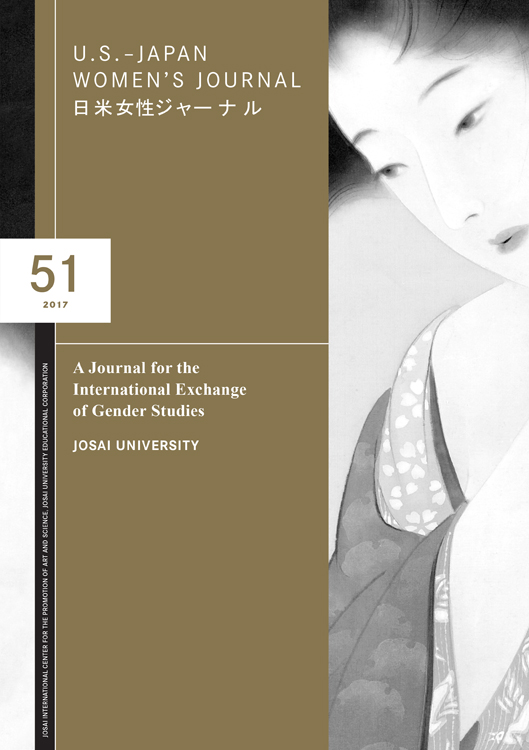
Article: “Building a Feminist Scholarly Community: Fifty-One Issues of U.S.–Japan Women’s Journal” by Jan Bardsley
Context: Like many of our scholarly journals, U.S.-Japan Women’s Journal is a community of minority voices in and of itself. This volume celebrates 50 issues of bringing women’s studies and scholars together across international boundaries.

Azalea: Journal of Korean Literature and Culture, Volume 10, 2017
Special Section: Writer in Focus: Kim Sagwa
Context: Azalea presents five pieces by Korean author Kim Sagwa, who was able to complete her first novel under the United States an Alien of Extraordinary Ability in the Arts visa in 2016. One must wonder, given the tide change in immigrant policies and arts funding under the current administration, if such visas will be available for international artists in the future.

Biography: An Interdisciplinary Quarterly, Volume 39, Number 4, Fall 2016
Special Section: International Year in Review
Context: Biography launched a new annual section that provides reports on life writing from across the world. This new venue gives us a lens by which to see global shifts in personal identity, from authors writing out of the U.K.’s Brexit to memoirists lyrically documenting the U.S.’s transgender community to historical biographers nostalgic for pre-1949 Republican China.
Trans-Humanities Journal, Volume 10, Number 1, 2017
Article: “Mapping the Terrain of New Black Fatherhood in Contemporary African American Literature” by Set-Byul Moon
Context: Literature can bridge the great divide between knowing and understanding, and this article looks at how the African American father has been developed against negative stereotypes through the writings of “Richard Wright, Ralph Ellison, James Baldwin, and Toni Morrison to contemporary — and relatively young — authors such as Leonard Pitts Jr. and Bernice L. McFadden.”
Asian Theatre Journal, Volume 34, Number 1, Spring 2017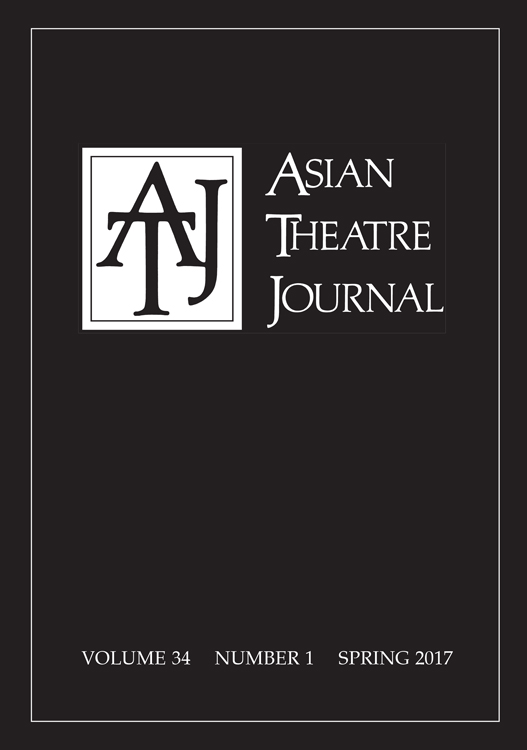
Special Section: Founders in the Field
Context: Asian Theatre Journal‘s Spring 2017 issue highlights three founders in the field–all women: Rachel Cooper, Kathy Foley, and Carol Fisher Sorgenfrei. Editor Kathy Foley also makes this charge to reviewers: “To become a truly international journal, cross-border research that does not always detour to Western thinking is much needed. It is limiting when authors feel they have to routinely apply Western tropes of gender, class, or aesthetics.”
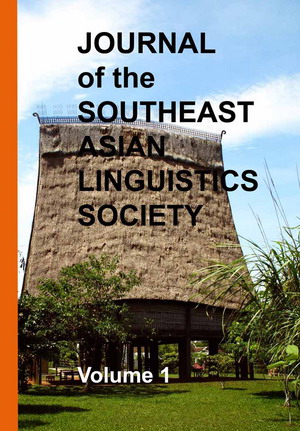
Journal of the Southeast Asian Linguistics Society, Volume 10, 2017
Section: Submission Guidelines
Context: This journal stands out for not only making new research in the field of Southeast Asian linguistics available for free via open-access publishing, but for its commitment to the peer review process, which ensures the publication of accurate information. From its submission guidelines: “Each original article undergoes double-blind review by at least two scholars, usually a member of the [JSEALS] Advisory Board and one or more independent referees.”
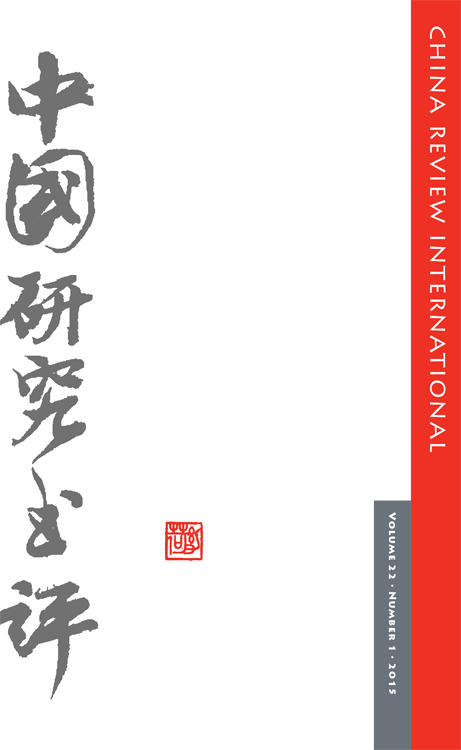
China Review International: A Journal of Reviews of Scholarly Literature in Chinese Studies, Volume 22, Number 1, 2015
Article: “Review of Ka-ming Wu’s Reinventing Chinese Tradition: The Cultural Politics of Late Socialism (Urbana: University of Illinois Press, 2015)” by Nyíri Pál
Context: New scholarship benefits from criticism, and in this issue of China Review International (published in 2017), reviewer Nyíri Pál offers a fresh analysis of Chinese folk traditions in light of economic developments and recent ethnographic studies of “culture workers.”
*Institutional access to online aggregators such as Project MUSE may be required for full-text reading. For access questions, please see the Project MUSE FAQ available here or contact your local library.
 Established in 1947, the University of Hawai`i Press supports the mission of the university through the publication of books and journals of exceptional merit. The Press strives to advance knowledge through the dissemination of scholarship—new information, interpretations, methods of analysis—with a primary focus on Asian, Pacific, Hawaiian, Asian American, and global studies. It also serves the public interest by providing high-quality books, journals and resource materials of educational value on topics related to Hawai`i’s people, culture, and natural environment. Through its publications the Press seeks to stimulate public debate and educate both within and outside the classroom.
Established in 1947, the University of Hawai`i Press supports the mission of the university through the publication of books and journals of exceptional merit. The Press strives to advance knowledge through the dissemination of scholarship—new information, interpretations, methods of analysis—with a primary focus on Asian, Pacific, Hawaiian, Asian American, and global studies. It also serves the public interest by providing high-quality books, journals and resource materials of educational value on topics related to Hawai`i’s people, culture, and natural environment. Through its publications the Press seeks to stimulate public debate and educate both within and outside the classroom.
For more information on the University of Hawai`i Press and our publications, visit www.uhpress.hawaii.edu. To receive table-of-contents email alerts for these publications, please click here to sign up at Project MUSE.
![]() This is Part 3 in a series of University of Hawai`i Press blog posts celebrating University Press Week and highlighting scholarship published by UH Press journals in the past year. Read our introductory blog post here. Our hope is that this series will shed new light on how UH Press “sells the facts,” so to speak, and the value our 24 journals bring to our very existence. Links to each journal and article are provided below.*
This is Part 3 in a series of University of Hawai`i Press blog posts celebrating University Press Week and highlighting scholarship published by UH Press journals in the past year. Read our introductory blog post here. Our hope is that this series will shed new light on how UH Press “sells the facts,” so to speak, and the value our 24 journals bring to our very existence. Links to each journal and article are provided below.*
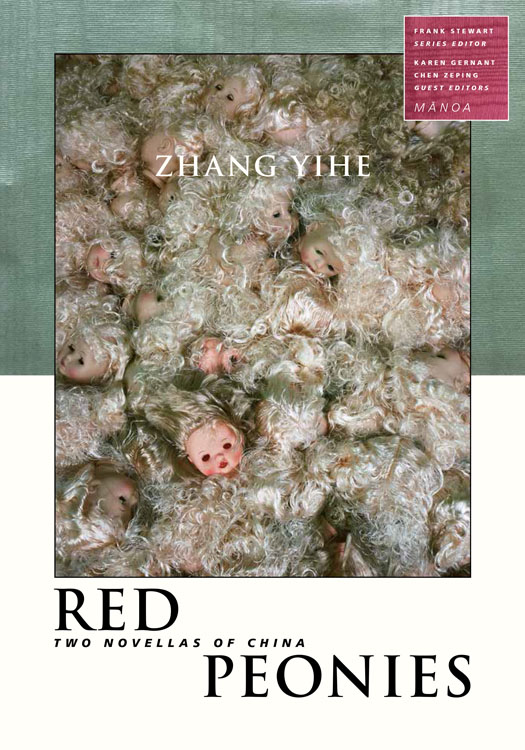
MĀNOA: A Pacific Journal of International Writing, Volume 28, Number 2, 2016
Special Volume: Red Peonies: Two Novellas of China, guest edited by Karen Gernant and Chen Zeping
Context: Published twice a year, MĀNOA features contemporary literature from Asia and the Pacific, often in translation. Volume 28 includes the work of author Zhang Yihe, whose novellas were banned in China and appear here in English for the first time. Charged as a counter-revolutionary in China, Yihe based her stories on the people she met while sentenced to 21 years in a remote labor prison. In 2017, MĀNOA was awarded $10,000 grant to pursue new projects in Burma and Cambodia from the National Endowment of the Arts, which is currently under threat of discontinued federal funding.

Cross-Currents: East Asian History and Culture Review,Volume 6, Number 1, May 2017
Article: “War Remembered, Revolution Forgotten: Recasting the Sino-North Korean Alliance in China’s Post-Socialist Media State” by Zhao Ma
Context: Scholar Zhao Ma explores the process of a nation’s remembering and forgetting the bloodshed and fervor behind a war—in this case, China’s involvement with North Korea—when it is recast through state-run media and propaganda.
Language Documentation & Conservation, Volume 11, 2017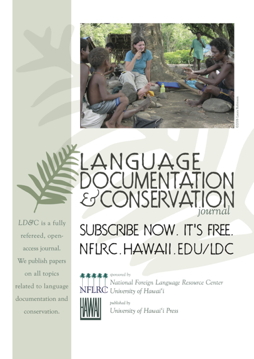
Article: “LD&C possibilities for the next decade” by Nick Thieberger
Context: As LD&C celebrates its 10th anniversary, editor Nick Thieberger takes a look at the journal’s downloads, Facebook following, and other statistics that have brought the open-access journal’s research to linguistics scholars across the globe, and wonders how new technology will change the field in the coming decade.
Oceanic Linguistics, Volume 56, Number 1, June 2017
Article: “Influence of Social Network on Language Use of Kejaman Speakers in Sarawak, Malaysia” by Amee Joan and Su-Hie Ting
Context: This study on linguistics changes in Malaysia carries more weight than if it had been published in previous years. From the article’s introduction: “In our view, social network can be studied as a proxy of interlinked determinants of language maintenance or shift. Investigating the influence of social network on language choice would contribute to a holistic understanding of factors determining language shift.”
*Institutional access to online aggregators such as Project MUSE may be required for full-text reading. For access questions, please see the Project MUSE FAQ available here or contact your local library.
 Established in 1947, the University of Hawai`i Press supports the mission of the university through the publication of books and journals of exceptional merit. The Press strives to advance knowledge through the dissemination of scholarship—new information, interpretations, methods of analysis—with a primary focus on Asian, Pacific, Hawaiian, Asian American, and global studies. It also serves the public interest by providing high-quality books, journals and resource materials of educational value on topics related to Hawai`i’s people, culture, and natural environment. Through its publications the Press seeks to stimulate public debate and educate both within and outside the classroom.
Established in 1947, the University of Hawai`i Press supports the mission of the university through the publication of books and journals of exceptional merit. The Press strives to advance knowledge through the dissemination of scholarship—new information, interpretations, methods of analysis—with a primary focus on Asian, Pacific, Hawaiian, Asian American, and global studies. It also serves the public interest by providing high-quality books, journals and resource materials of educational value on topics related to Hawai`i’s people, culture, and natural environment. Through its publications the Press seeks to stimulate public debate and educate both within and outside the classroom.
For more information on the University of Hawai`i Press and our publications, visit www.uhpress.hawaii.edu. To receive table-of-contents email alerts for these publications, please click here to sign up at Project MUSE.
![]() This is Part 2 in a series of University of Hawai`i Press blog posts celebrating University Press Week and highlighting scholarship published by UH Press journals in the past year. Read our introductory blog post here. Our hope is that this series will shed new light on how UH Press “sells the facts,” so to speak, and the value our 24 journals bring to our very existence. Links to each journal and article are provided below.*
This is Part 2 in a series of University of Hawai`i Press blog posts celebrating University Press Week and highlighting scholarship published by UH Press journals in the past year. Read our introductory blog post here. Our hope is that this series will shed new light on how UH Press “sells the facts,” so to speak, and the value our 24 journals bring to our very existence. Links to each journal and article are provided below.*
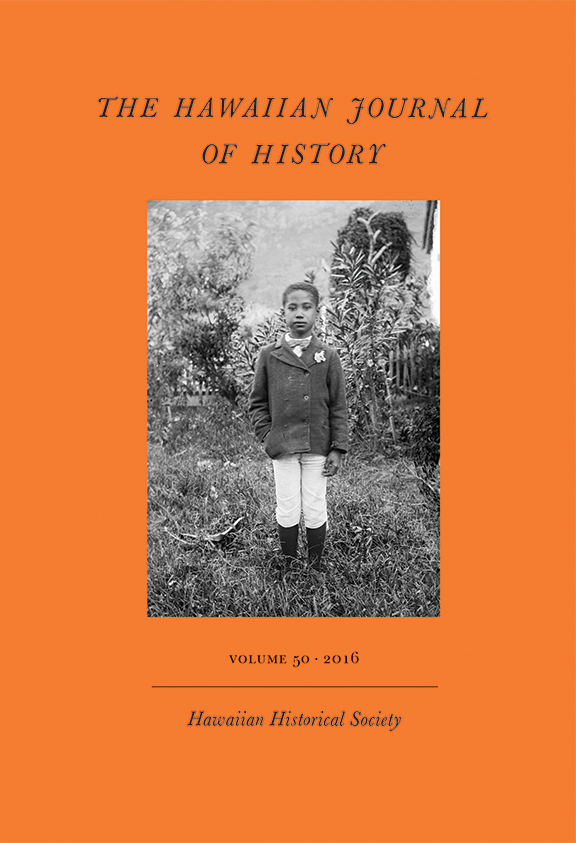
The Hawaiian Journal of History, Volume 50, 2016
Article: “Jeeps, Communists, and Quonset Huts: World War II Surplus Disposal in the Territory of Hawai‘i” by Gwen Sinclair
Context: The effects of militarization and colonialism in Hawai’i are brought into focus with a historical analysis of how the U.S. government took ownership of and dispersal of supplies after World War II. The market produced by these historic events continues to affect the current Hawai’i-U.S. mainland political climate, and are exasperated by comments from the 45th president about “boycotting” Hawai’i.
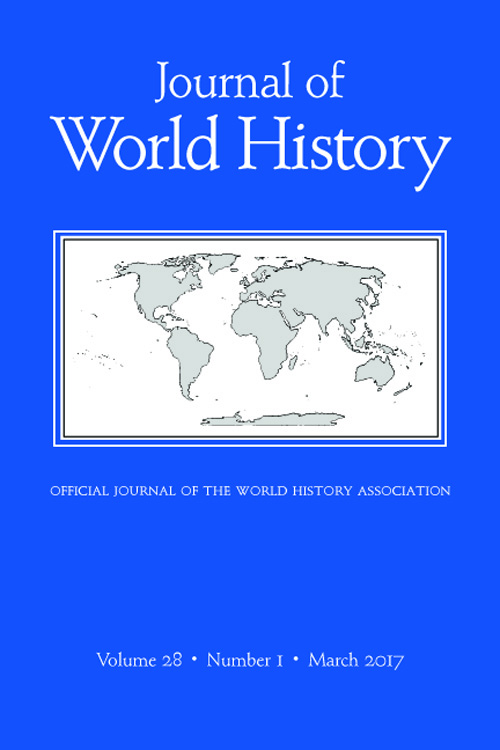
Journal of World History, Volume 28, Number 1, March 2017
Article: “Cotton and the Global Origins of Capitalism” by Sven Beckert
Context: While politicians on both sides of the U.S. election toted arguments of a lost domestic economy to industries overseas, the history of capitalism in the U.S. has always stretched beyond the nation’s borders. From his World History Association keynote address, Sven Beckert sets the tone for this issue’s special forum, which also makes a call for better understandings: “Commodity-focused histories are one powerful way to move toward a history beyond the nation-state, partly because they give empirical specificity to far-flung connections, partly because they allow us to bring the lessons of social history into global history, partly because they provide audiences for global history, and partly because, if done right, they can help us better understand some of the largest questions of world history.”
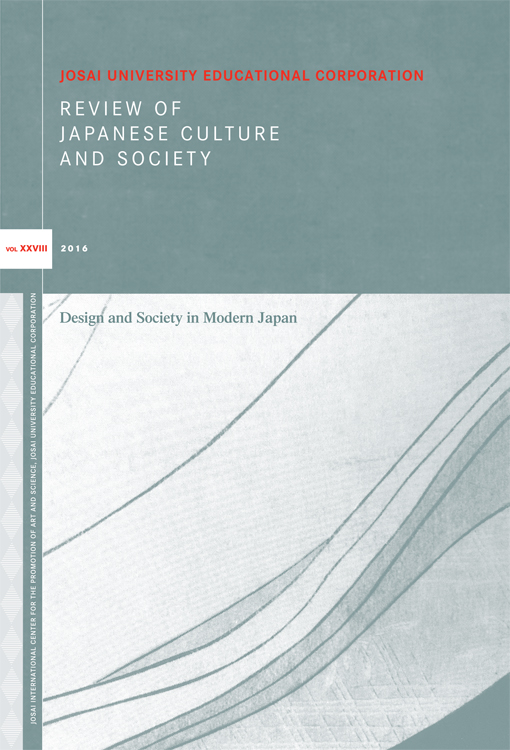 Review of Japanese Culture and Society, Volume 28, 2016
Review of Japanese Culture and Society, Volume 28, 2016
Special Section: Postwar Recovery, Affluence, and Its Critique
Context: What does reconstruction look like in a nation that lost a war and suffered two nuclear attacks? The Review of Japanese Culture and Society compiled a section of articles from Japanese photographers, architects, advertisers, and designers to share perspectives on the past and present postwar landscape.
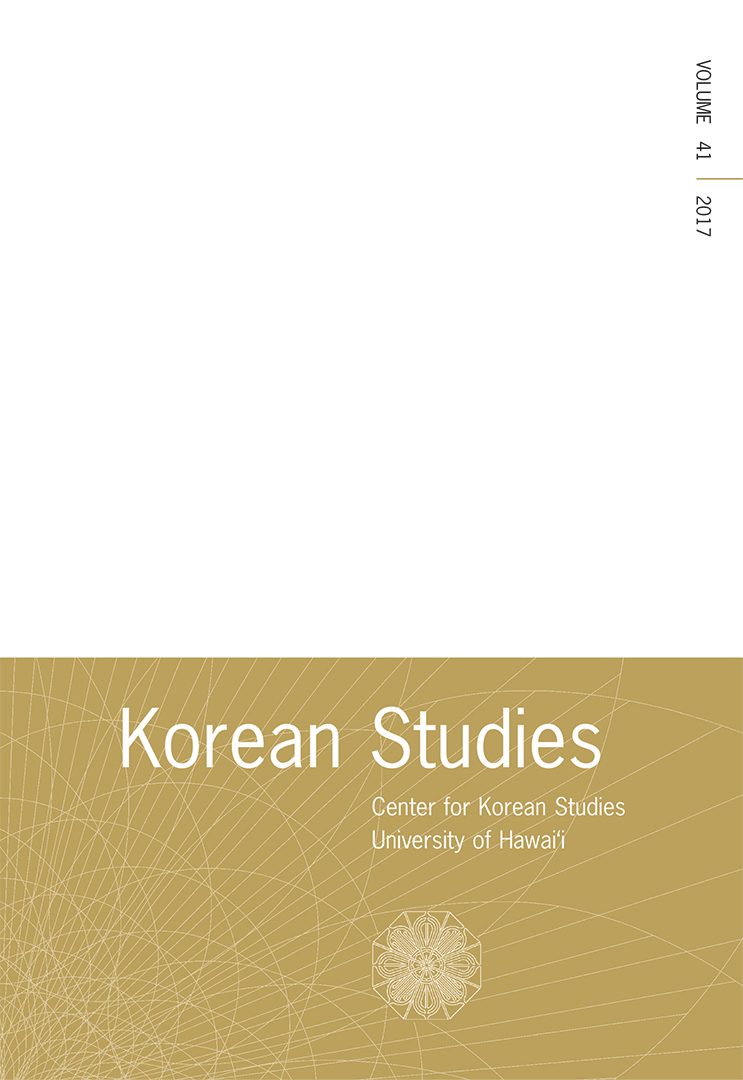 Korean Studies: A Multidisciplinary Journal on Korea and Koreans Abroad, Volume 41, 2017
Korean Studies: A Multidisciplinary Journal on Korea and Koreans Abroad, Volume 41, 2017
Article: “Informal Empire: The Origins of the U.S.–ROK Alliance and the 1953 Mutual Defense Treaty Negotiations” by Victor D. Cha
Context: In a search for validity, scholar Victor D. Cha unpacks a rare archival account of the 1953 mutual defense treaty negotiations that led to the creation of the U.S.-Republic of Korea (ROK) alliance.
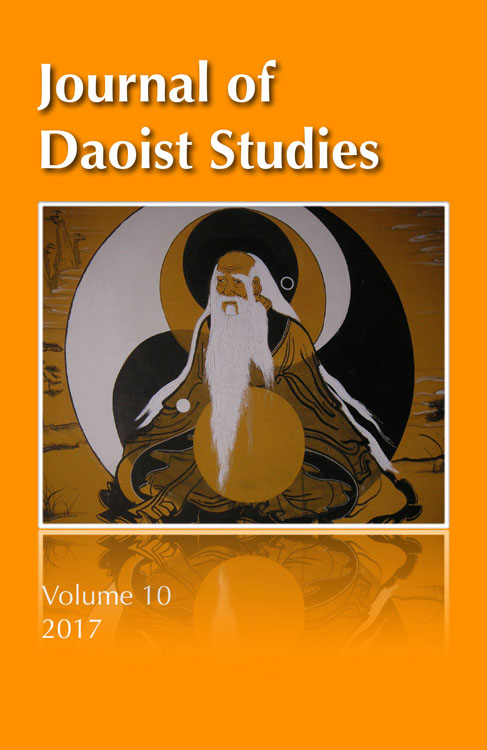 Journal of Daoist Studies, Volume 10, 2017
Journal of Daoist Studies, Volume 10, 2017
Article: “The American Transformation of Daoist Cultivation” by Livia Kohn
Context: Livia Kohn studies the Chinese influence on American healthcare, including cognitive therapy and stress relief: “Since 1965, when the Immigration Act was changed to allow Asians to immigrate to the United States, Chinese healing and longevity methods have become increasingly popular in America.”
*Institutional access to online aggregators such as Project MUSE may be required for full-text reading. For access questions, please see the Project MUSE FAQ available here or contact your local library.
 Established in 1947, the University of Hawai`i Press supports the mission of the university through the publication of books and journals of exceptional merit. The Press strives to advance knowledge through the dissemination of scholarship—new information, interpretations, methods of analysis—with a primary focus on Asian, Pacific, Hawaiian, Asian American, and global studies. It also serves the public interest by providing high-quality books, journals and resource materials of educational value on topics related to Hawai`i’s people, culture, and natural environment. Through its publications the Press seeks to stimulate public debate and educate both within and outside the classroom.
Established in 1947, the University of Hawai`i Press supports the mission of the university through the publication of books and journals of exceptional merit. The Press strives to advance knowledge through the dissemination of scholarship—new information, interpretations, methods of analysis—with a primary focus on Asian, Pacific, Hawaiian, Asian American, and global studies. It also serves the public interest by providing high-quality books, journals and resource materials of educational value on topics related to Hawai`i’s people, culture, and natural environment. Through its publications the Press seeks to stimulate public debate and educate both within and outside the classroom.
For more information on the University of Hawai`i Press and our publications, visit www.uhpress.hawaii.edu. To receive table-of-contents email alerts for these publications, please click here to sign up at Project MUSE.